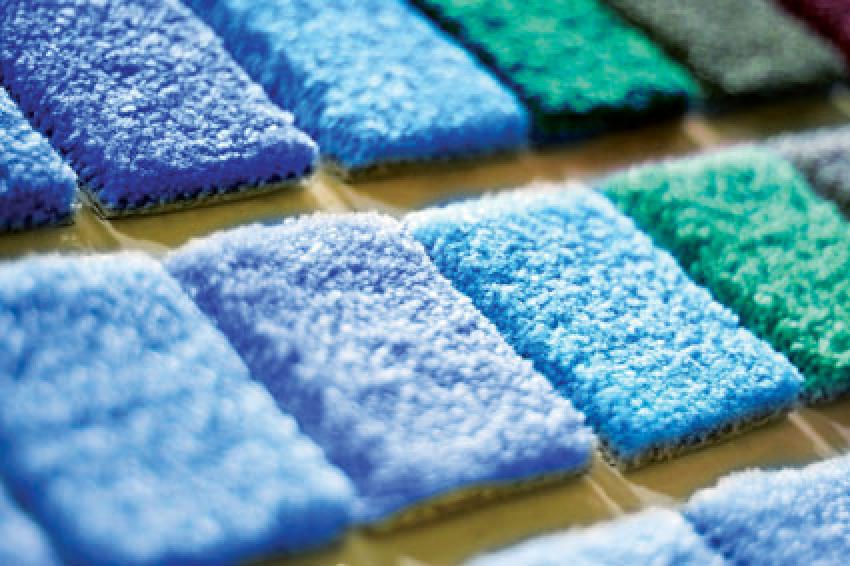Ethernet: Saving Time And Money
A Case Study from Shaw Industries and Endress+Hauser
A Leap Forward - In process engineering, most signals are still transmitted in analog form - and Shaw Industries, the world's largest carpet manufacturer, was no exception. Until the company dared to take a great leap forward and converted a dye line to Ethernet.
The crisis was a major blow to the American real estate market. Shaw Industries, market leader in floorings for the residential sector, was affected. But the company took action even before the worst of the recession - and looked for ways to produce more flexibly and efficiently. "In finding a new solution for dying fitted carpets, we have succeeded in taking a major step forward," said Jay McClure, technology and integration manager at the Department for Computer-integrated Manufacturing at Shaw Industries.
At the center of this solution is an industrial Ethernet network - and groundbreaking flowmeter engineering from Endress+Hauser. But first things first...
The majority of carpeting for residential use is dyed in an immersion bath. For this process, concentrated dyes and additives are injected into a water stream. "Our task was to convert the system so that we could extend the scope of products processed on the same line," said Kevin Espy, senior project engineer at Shaw Industries. In order to achieve this, the number of injection loops had to be increased to 40. "Above all, we had to change the entire layout to be able to extend the flow range of the individual loops. Depending on the fiber, completely different dyes and additives are required in widely varying quantities."
Numerous factors influence the quantity of dye solution required. The plant runs faster or slower depending on how long the carpet has to be pre-treated in the steam bath. Dark shades need more dye; the same applies to heavy carpet fabrics. Added to this are stringent quality requirements. "The flow rates mustn't vary by more than one percent from the specified rate," said Espy.
Stepping Into the Digital Future
It was soon obvious that this objective could not be reached using analog signal transmission. "The old technology limited us in what we could do," McClure said. "With a 4 to 20 milliamp signal, we would never have achieved the data resolution needed for such a large flow range." Changing to digital HART protocol was the obvious solution - but things took a different turn.
The newly designed dye line was to be controlled using PlantPAx, a control system from Rockwell Automation. It operates with EtherNet/IP, an Ethernet protocol designed to meet industry requirements and widely used in factory automation. One day, Rockwell Automation approached the company and drew their attention to a Coriolis flowmeter with EtherNet/IP interface: the Promass 83 from Endress+Hauser.
"We were very interested in the concept right from the outset," Espy said. Nevertheless, it wasn't an easy decision. "Changing your supplier is always a major issue. The personnel have been trained, they are familiar with the devices, there's a stock of spares - it needs really compelling reasons." Instruments from several manufacturers were put through stringent tests, looking at function, precision and reliability. Communication protocols, the dimensions of the housing and of course the price were all taken into consideration in the decision-making process. In the end, Endress+Hauser's Promass Coriolis flowmeter stood out, Epsy said.
Shaw Industries therefore decided on Endress+Hauser and Ethernet technology. The installation went smoothly, and as each instrument has its own IP address, it can be immediately accessed via the network once connected. This saves time, particularly for configuration.
More Products, Easier Operation
The new plant has been working for more than a year now without any problems. The improvement is striking: The flow range has more than doubled, and the flow rate can be varied between 0.5 and more than 50 liters a minute. Now 78 different products can now be dyed on the same line instead of the previous 48. And because the dye solution can be dosed exactly and specifically, batch tanks are no longer required. This cuts down time and effort as well as reducing the consumption of dyes and additives. Not only does this save money, but it is also environmentally friendly. The new plant has become something of a prototype; further production lines are scheduled to be converted.
Interview:
Michael Ziesemer, Endress+Hauser COO and executive board member, about the company's plans for further development





